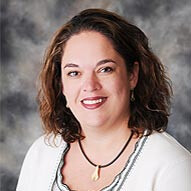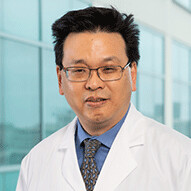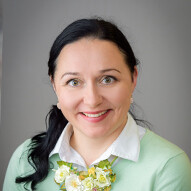Pediatric Ewing sarcoma
Pediatric Ewing sarcoma involves tumors that usually grow in a child’s bones or soft tissue. At Children’s Health℠, we use the latest research and treatments to give children the best opportunity to overcome these cancers.
What is pediatric Ewing sarcoma?
The word “sarcoma” means a tumor that grows in bones or soft tissue like muscles and tendons. Sarcomas with a certain type of genetic change are defined as Ewing sarcomas.
Ewing's sarcoma may spread to other parts of the body, such as the lungs, bone or bone marrow. But in most cases, it stays in a limited area.
Ewing sarcoma was first described by Dr. James Ewing, an American pathologist, in 1921.
Risk factors
Ewing sarcoma is the second most common bone cancer found in children and adolescents. Every year, about 200 children and young adults in the U.S. develop Ewing sarcoma. Most of these tumors grow in bones of the legs, arms, back, chest or pelvis. But they can occur anywhere in the body.
What are the signs and symptoms of pediatric Ewing sarcoma?
Children with Ewing's sarcoma often notice pain or swelling where the tumor is growing. Children can also develop a limp, numbness, tingling, paralysis, low-grade fevers, weight loss and fatigue.
How is pediatric Ewing sarcoma diagnosed?
We identify the type of cancer by taking a sample of the tumor, looking at it under the microscope and studying its DNA. We also get detailed images of the tumor, through tests like an MRI, CT scan and PET-CT scan. These images show us how big the tumor is and whether it has spread to other places in the body.
We use the type, size and location of the tumor to decide which treatment will work best for your child.
What causes pediatric Ewing sarcoma?
Unfortunately, no one is sure what causes these tumors. It isn’t associated with any environmental exposures and isn’t a cancer that is passed down in families.
How is pediatric Ewing sarcoma treated?
A child with Ewing sarcoma will typically have three stages of treatment:
Chemotherapy - Used to kill the cancer cells and shrink the tumor
Surgery or radiation - This depends on the location of the tumor. If it can be removed completely and safely, we recommend surgery. If it’s located somewhere that risks damaging part of the body or if the tumor can’t be removed completely with surgery, we recommend radiation.
Additional courses of chemotherapy - Used to kill off any remaining cancer
Does Children's Health participate in research studies for pediatric Ewing sarcoma?
At Children’s Health, we also always look for new and better treatments. Our academic affiliation with UT Southwestern Medical Center allows our providers to participate in ground-breaking research and provide innovative care.
Combinations of chemotherapy drugs - Our patients have access to clinical trials that might only be available at a handful of hospitals. This includes a clinical trial studying which combinations of chemotherapy drugs are most effective for kids with Ewing sarcoma.
Developmental therapeutics program - We provide access to the newest treatment options for patients with relapsed cancer (cancer that has come back after initial treatment) through clinical trials offered in our Developmental Therapeutics Program.
Genetic testing - We also use genetic testing, through our Precision Medicine Program, to identify genetic mutations that can be targeted with medications. With genetic testing we can provide more effective treatment with fewer side effects.
Pediatric Ewing sarcoma doctors and providers
Children’s Health is home to some of the nation’s top pediatric cancer specialists and where physicians are also faculty members at UT Southwestern Medical Center. We use a team approach and work together with surgeons, radiation oncologists, pathologists, radiologists, physical therapists (PT), psychologists and social workers to provide multidisciplinary care.
 Daniel Bowers, MDPediatric Hematologist/Oncologist
Daniel Bowers, MDPediatric Hematologist/Oncologist Kenneth Chen, MDPediatric Hematologist/Oncologist
Kenneth Chen, MDPediatric Hematologist/Oncologist Samuel John, MDPediatric Hematologist/Oncologist
Samuel John, MDPediatric Hematologist/Oncologist Laura Klesse, MDPediatric Hematologist/Oncologist
Laura Klesse, MDPediatric Hematologist/Oncologist Andrew Koh, MDPediatric Hematologist/Oncologist
Andrew Koh, MDPediatric Hematologist/Oncologist Patrick Leavey, MDPediatric Hematologist/Oncologist
Patrick Leavey, MDPediatric Hematologist/Oncologist Kathleen Ludwig, MDPediatric Hematologist/Oncologist
Kathleen Ludwig, MDPediatric Hematologist/Oncologist Arhanti Sadanand, MDPediatric Hematologist/Oncologist
Arhanti Sadanand, MDPediatric Hematologist/Oncologist Avanthi Shah, MDPediatric Hematologist/Oncologist
Avanthi Shah, MDPediatric Hematologist/Oncologist Ksenya Shliakhtsitsava, MDPediatric Hematologist/Oncologist
Ksenya Shliakhtsitsava, MDPediatric Hematologist/Oncologist Tiffany Simms-Waldrip, MDPediatric Hematologist/Oncologist
Tiffany Simms-Waldrip, MDPediatric Hematologist/Oncologist Tamra Slone, MDPediatric Hematologist/Oncologist
Tamra Slone, MDPediatric Hematologist/Oncologist Tanya Watt, MDPediatric Hematologist/Oncologist
Tanya Watt, MDPediatric Hematologist/Oncologist Jonathan Wickiser, MDPediatric Hematologist/Oncologist
Jonathan Wickiser, MDPediatric Hematologist/Oncologist Naomi Winick, MDPediatric Hematologist/Oncologist
Naomi Winick, MDPediatric Hematologist/Oncologist